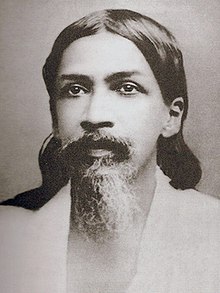HISTORY

Aurobindo case papers fading away
Photographs of the accused in the Alipore Bomb caseat the museum.
Kolkata museum struggles to preserve rare documents about the freedom struggle
Rare documents about the freedom struggle are falling to pieces in a Kolkata museum due to continued neglect.
Exactly 110 years after the historic trial of eminent nationalist, poet, philosopher and spiritual figure Aurobindo Ghosh (popularly known as Sri Aurobindo) in the Alipore Bomb case, the documents related to the event are crumbling due to poor preservation.
The museum, located in the premises of the District Civil and Sessions Court at Alipore, has more than 50 legal documents on the freedom struggle. The Alipore Bomb case trial, which took place from May 1908 to May 1909, is an event of historical significance during which many young Bengali revolutionaries were charged with “waging war against the King”.
The documents are now kept on the ground floor of a two-storied building in the court premises, which also houses the office of the district judge of South 24 Paraganas. Apart from the Alipore case records, other documents include an arrest warrant against Netaji Subhash Chandra Bose. The museum, named Smaronio Bicchar Sangroho (Collection of Memorable Judicial Records), was established on August 15, 1998 and is administered by the Court.
Bulbs fight moisture
It consists of three rooms, including the court room where the trial of Sri Aurbindo was held. However, all the rooms are damp and poorly lit. The documents are in wooden cases with glass tops. Bulbs hung over them keep the dampness in check. A court official said that “it is not possible to save the documents from moisture with just bulbs.” The edges of several documents are badly crumpled and the date on the warrant against Netaji is barely visible. The sides of some pages of Aurobindo’s court statement have fallen off. The records of the attack on Writers Building in Central Kolkata’s Dalhousie on December 8, 1930 by freedom fighters Binoy Krishna Basu, Dinesh Gupta and Badal Gupta, are also not in good condition.
Rabindranath Samanta, district judge, South 24 Paraganas, said a request would be made to the State government for air-conditioning of the museum and digitisation of documents. As the museum is under the supervision of the Calcutta High Court, any request for funds from the State government has to be routed through the High Court.
Sri Aurobindo (Bengali: [Sri Ôrobindo]) (born Aurobindo Ghose; 15 August 1872 – 5 December 1950) was an Indian philosopher, yogi, guru, poet, and nationalist.[2] He joined the Indian movement for independence from British rule, for a while was one of its influential leaders and then became a spiritual reformer, introducing his visions on human progress and spiritual evolution.
Aurobindo studied for the Indian Civil Service at King's College, Cambridge, England. After returning to India he took up various civil service works under the maharaja of the princely state of Baroda and became increasingly involved in nationalist politics and the nascent revolutionary movement in Bengal. He was arrested in the aftermath of a number of bomb outrages linked to his organisation, but in a highly public trial where he faced charges of treason, Aurobindo could only be convicted and imprisoned for writing articles against British rule in India. He was released when no evidence could be provided, following the murder of a prosecution-witness during the trial. During his stay in the jail he had mystical and spiritual experiences, after which he moved to Pondicherry, leaving politics for spiritual work.
During his stay in Pondicherry, Sri Aurobindo developed a method of spiritual practice he called Integral Yoga. The central theme of his vision was the evolution of human life into a life divine. He believed in a spiritual realisation that not only liberated man but transformed his nature, enabling a divine life on earth. In 1926, with the help of his spiritual collaborator, Mirra Alfassa (referred to as "The Mother"), he founded the Sri Aurobindo Ashram.
His main literary works are The Life Divine, which deals with theoretical aspects of Integral Yoga; Synthesis of Yoga, which deals with practical guidance to Integral Yoga; and Savitri: A Legend and a Symbol, an epic poem. His works also include philosophy, poetry, translations and commentaries on the Vedas, Upanishads and the Bhagavad Gita. He was nominated for the Nobel Prize in Literature in 1943 and for the Nobel Peace Prize in 1950
Courtesy:
Comments
Post a Comment